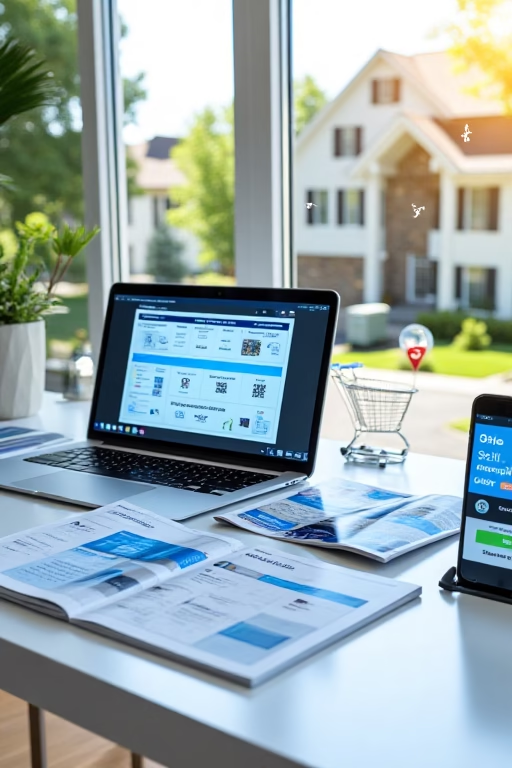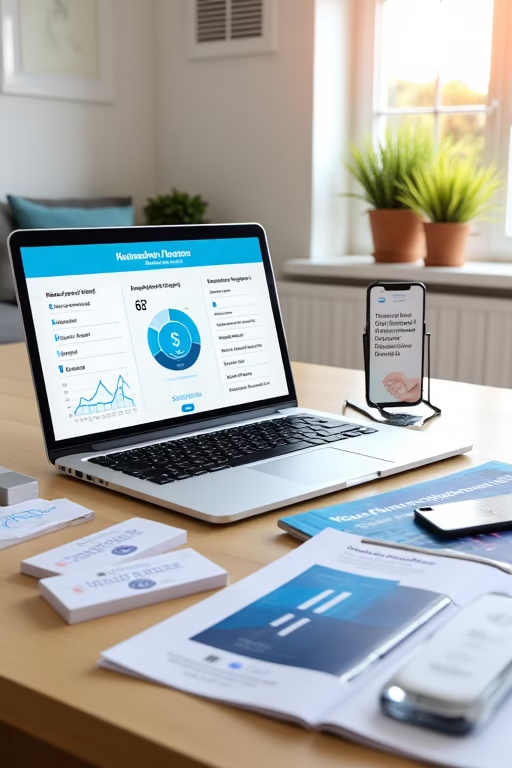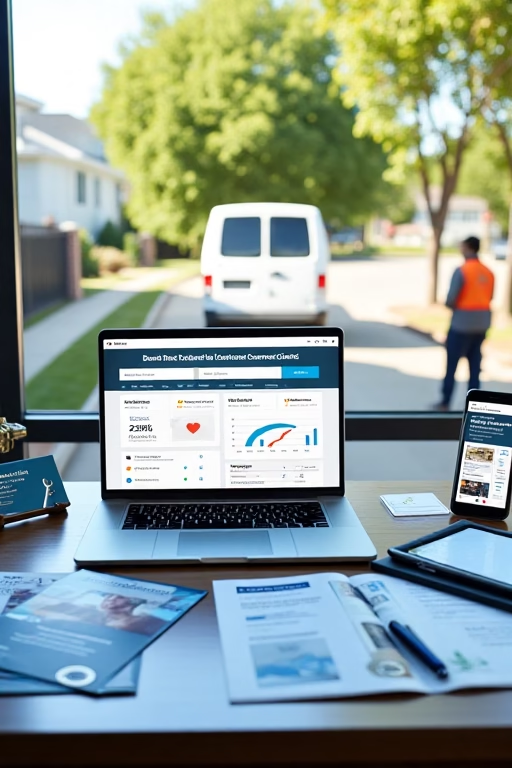How to Sell More HVAC Units Online: E-Commerce & Local SEO Tactics
How to Sell More HVAC Units Online: E-Commerce & Local SEO Tactics
Your Digital & Local Sales Blueprint by Market Wiz
Table of Contents
- Introduction: The New Online HVAC Marketplace
- 1. Building a High-Converting E-Commerce Store
- 1.1 Choosing the Right Platform (Shopify, WooCommerce, BigCommerce)
- 1.2 Site Architecture & Category Structure
- 1.3 Mobile Optimization & Page Speed
- 2. Optimizing Product Pages for Search & Conversion
- 2.1 Keyword-Rich Titles & Meta Descriptions
- 2.2 High-Quality Images, 3D Models & Videos
- 2.3 Persuasive Copy & Technical Specs
- 2.4 User Reviews & Ratings
- 3. Pricing Strategies & Promotional Tactics
- 4. Mastering Local SEO for HVAC
- 4.1 Google Business Profile Optimization
- 4.2 Local Keyword Targeting & Content
- 4.3 Building & Managing Local Citations
- 5. Content Marketing & Link Building
- 5.1 Educational Blog Posts & Guides
- 5.2 Infographics & Case Studies
- 5.3 Partnering with Industry Publications
- 6. Paid Advertising & Retargeting
- 6.1 Google Shopping & PLA Campaigns
- 6.2 Facebook & Instagram Dynamic Ads
- 6.3 Site-Visitor Retargeting Strategies
- 7. Leveraging Reviews & Social Proof
- 8. Email Marketing & CRM Integration
- 9. Analytics & Ongoing Optimization
- Conclusion & Next Steps
- 25 FAQs
- 25 Extra Keywords
Introduction: The New Online HVAC Marketplace
The shift to digital shopping extends to big-ticket items like HVAC units. Consumers research models, compare prices, and even purchase online before scheduling installation. To capture this growing e-commerce HVAC market, you need a robust online store combined with local SEO tactics—ensuring you rank for “buy HVAC unit near me” and convert clicks into orders.
1. Building a High-Converting E-Commerce Store
1.1 Choosing the Right Platform
Select a scalable e-commerce platform: Shopify for ease of use, WooCommerce for WordPress integration, or BigCommerce for enterprise features. Ensure PCI compliance and robust security for high-value transactions.
1.2 Site Architecture & Category Structure
Organize products by category (Residential, Commercial, Ductless, Packaged). Use clear navigation and breadcrumb trails to guide users and distribute SEO authority across pages.
1.3 Mobile Optimization & Page Speed
With 60% of traffic on mobile, choose responsive themes, compress images, leverage lazy loading, and use a CDN to keep load times under 2 seconds—critical for both conversions and Google rankings.
2. Optimizing Product Pages for Search & Conversion
2.1 Keyword-Rich Titles & Meta Descriptions
Include primary keywords like “Central Air Conditioner 16 SEER” and geo-modifiers where relevant. Craft persuasive meta descriptions with calls to action (“Shop Now & Save on Install”).
2.2 High-Quality Images, 3D Models & Videos
Show multiple angles, installation examples, and interactive 3D models. Embed short explainer videos demonstrating features and benefits.
2.3 Persuasive Copy & Technical Specs
Balance emotion (comfort, peace of mind) with technical details: SEER ratings, sound levels (dB), warranty terms, and compatibility notes. Use bullet points for scannability.
2.4 User Reviews & Ratings
Display verified purchase reviews prominently. Implement schema markup for star ratings to appear in search results and build trust.
3. Pricing Strategies & Promotional Tactics
Offer tiered discounts for multi-unit purchases, bundle with free smart thermostats, and run seasonal promotions (pre-summer AC sales, off-peak furnace deals). Use scarcity tactics (“Only 5 left in stock”) to drive urgency.
4. Mastering Local SEO for HVAC
4.1 Google Business Profile Optimization
- Verify and complete your profile with categories “HVAC contractor” and “Air conditioning supply store.”
- Post product highlights and seasonal offers weekly.
4.2 Local Keyword Targeting & Content
Create location-specific landing pages (e.g., “HVAC Units for Sale in Springfield, IL”) with unique content and customer testimonials from each area.
4.3 Building & Managing Local Citations
Ensure NAP consistency across directories—Yellow Pages, Yelp, HomeAdvisor. Use a citation management tool to monitor and update listings.
5. Content Marketing & Link Building
5.1 Educational Blog Posts & Guides
Publish in-depth guides: “Choosing the Right HVAC Unit Size” and “Understanding SEER Ratings.” Offer downloadable checklists in exchange for email signups.
5.2 Infographics & Case Studies
Create shareable infographics illustrating energy savings and ROI. Develop case studies showcasing successful installations and quantified benefits.
5.3 Partnering with Industry Publications
Write guest articles for home improvement blogs and local news sites. Include contextual backlinks to your product pages to boost authority.
6. Paid Advertising & Retargeting
6.1 Google Shopping & PLA Campaigns
Feed your product catalog to Google Merchant Center. Optimize titles, images, and descriptions to improve Quality Score and click-through rates.
6.2 Facebook & Instagram Dynamic Ads
Retarget site visitors with ads showcasing the exact models they viewed, offering limited-time discounts to draw them back.
6.3 Site-Visitor Retargeting Strategies
Use pixel-based retargeting on Google Display Network and Facebook. Serve educational content first, then a purchase offer on subsequent visits.
7. Leveraging Reviews & Social Proof
Encourage verified purchasers to leave detailed reviews. Showcase video testimonials on the homepage and integrate a live review feed. Highlight “Over 500 happy customers served” badges.
8. Email Marketing & CRM Integration
Segment your list by interest and purchase stage. Send automated flows: cart abandonment reminders, post-purchase installation scheduling, and upsell offers like maintenance plans and accessories.
9. Analytics & Ongoing Optimization
- Track e-commerce KPIs: conversion rate, average order value, cart abandonment.
- Monitor local SEO rankings and map pack visibility weekly.
- Run A/B tests on product page layouts, CTAs, and pricing displays to continually improve performance.
Conclusion & Next Steps
Combining a slick e-commerce experience with robust local SEO ensures you capture both broad online demand and nearby buyers searching for “HVAC units near me.” Start by auditing your store’s mobile performance, optimizing three top-selling product pages, and refining your Google Business Profile. Then launch a Google Shopping campaign and a local content blitz—watch your online HVAC sales climb.
25 Frequently Asked Questions
1. How do I choose the best e-commerce platform?
Consider your inventory size, budget, and required integrations. Shopify excels at ease of use; WooCommerce offers flexibility; BigCommerce scales for larger catalogs.
2. What SEO plugins should I use?
Yoast SEO for WordPress/WooCommerce; Shopify’s built-in SEO settings plus apps like SEO Manager; BigCommerce’s native SEO tools are robust.
3. How many images per product?
At least 4–6 high-resolution images: unit front, side, back, control panel, duct connections, and installation example.
4. Should I show prices online?
Yes—transparency builds trust. If you require quotes, display a “Starting at $X” price to set expectations.
5. How to handle shipping large units?
Offer freight shipping quotes; partner with white-glove carriers; clearly communicate lead times and install coordination.
6. Can I integrate financing?
Yes—use apps like Affirm, Klarna, or Shop Pay Installments to offer pay-over-time options at checkout.
7. How to get more Google reviews?
Automate post-purchase email/SMS requests with direct review links; offer small incentives like discount codes.
8. What are local citations?
Mentions of your business’s name, address, and phone across online directories—critical for local SEO authority.
9. Should I blog on HVAC topics?
Absolutely—educational content attracts organic traffic and positions you as an authority in the HVAC space.
10. How often update PPC bids?
Weekly—adjust based on performance metrics like cost-per-acquisition and impression share.
11. What’s a good cart abandonment rate?
Average is 70–75%. Use email reminders and exit-intent popups to reduce it by 10–15%.
12. How to price bundles?
Offer 5–10% off when purchasing unit + smart thermostat or maintenance plan together to increase average ticket.
13. Can I sell replacement filters online?
Yes—filters generate recurring revenue. Implement subscription options to automate repurchases every 3–6 months.
14. How to optimize for voice search?
Use conversational, question-based keywords (“Where can I buy HVAC units near me?”) and implement FAQ schema.
15. Are 3D models worth it?
They enhance engagement—allowing prospects to rotate and zoom on units increases time on page and conversions.
16. What content boosts link building?
Original research (energy saving stats), interactive calculators, and shareable infographics attract natural backlinks.
17. How to measure local ranking?
Use tools like BrightLocal or Whitespark to track map pack and local organic positions over time.
18. Do I need schema markup?
Yes—Product, Review, and FAQ schema improve search result appearance and click-through rates.
19. How to handle returns?
Clearly outline return windows, restocking fees, and pick-up options; display policy prominently at checkout.
20. Should I offer live chat?
Yes—24/7 chatbots for basic queries and live agents during business hours reduce friction and boost sales.
21. How often review analytics?
Daily for PPC and site errors; weekly for traffic and conversion trends; monthly for strategic adjustments.
22. What’s A/B testing priority?
Test product page CTAs, pricing displays, and homepage banners to identify highest impact changes first.
23. Can I integrate installation scheduling?
Yes—embed calendar widgets (Calendly, Bookafy) at checkout for seamless post-purchase appointment booking.
24. How to capture B2B HVAC buyers?
Create a “Commercial Sales” portal with volume pricing, contract inquiry forms, and dedicated account managers.
25. First step to implement?
Audit your product catalog for SEO gaps, update three flagship product pages with optimized content and images, and submit your Google Business Profile to refresh.
25 Extra Keywords
- buy HVAC unit online
- central AC e-commerce
- ductless mini split online sale
- shop HVAC units near me
- HVAC product page SEO
- local HVAC unit specials
- online HVAC promotions
- HVAC store mobile optimization
- Google Maps HVAC supplier
- HVAC shopping feed
- smart thermostat bundle sale
- HVAC financing at checkout
- energy efficient AC deals
- HVAC installation booking
- HVAC equipment subscription
- HVAC parts online
- HVAC wholesale online
- HVAC e-mail drip campaign
- retargeting HVAC visitors
- HVAC trust badges
- HVAC FAQ schema
- HVAC conversion optimization
- HVAC digital catalog
- HVAC local citation management
- Market Wiz HVAC tips
How to Sell More HVAC Units Online: E-Commerce & Local SEO Tactics Read More »






